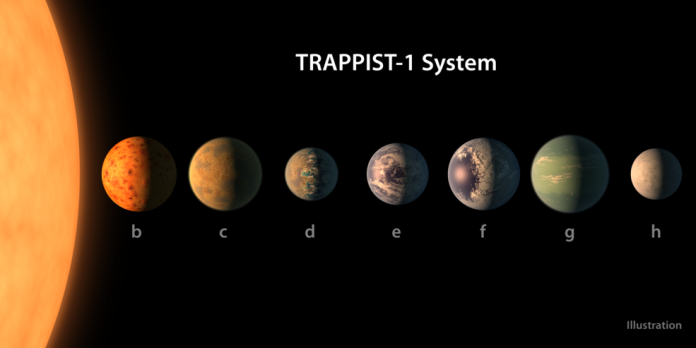By: Nick Gambino
While most of us are busy wondering whether NASA is going to find life on Mars or not, it seems they’re about 40 steps ahead of us. Well, more like 40 light years ahead of us.
That’s about the distance between us and seven new Earth-sized planets discovered orbiting the ultra-cool dwarf star, Trappist-1.
On Wednesday, NASA announced the discovery of these planets by NASA’s Spitzer Space Telescope and the Transiting Planets and Planeteslmals Small Telescope (that’s where Trappist-1 gets its name from) in Chile.
To illustrate the importance of this find, consider this: this is the first known system with that many planets orbiting one star much like our system here. Three of these planets are in a habitable zone which means not too close and not too far from the sun-like star.
Trappist-1 is actually a lot cooler than the sun which is why it’s classified as an “ultra-cool dwarf star.” This temperature is a big factor that contributes to the excitement in the discovery.
With the distance from Trappist-1 and with the size of the planets it is highly possible that one or more of these seven planets may have liquid water on them. Taking that a step forward that means there may be life on one of the habitable planets.
That’s huge and is a giant step forward in potentially discovering “alien life.”
“The discovery gives us a hint that finding a second Earth is not just a matter of if, but when,” says Thomas Zurbuchen, associate administrator, Science Mission Directorate at NASA. “Answering the question ‘are we alone’ is a top science priority and finding so many planets like these for the first time in the habitable zone is a remarkable step forward toward that goal.”
Next up the Hubble Space Telescope is getting in on the action and has started the screening of four of the planets. These screenings plan to assess the presence of “puffy, hydrogen-dominated atmospheres, typical for gaseous worlds like Neptune, around these planets.”
NASA’s newest telescope, the James Webb Space Telescope, will launch in 2018 and will detect “chemical fingerprints of water, methane, oxygen, ozone, and other components of a planet’s atmosphere” as well as temperatures and surface pressures.
How exciting is that?! Here’s to hoping we find signs of life on other planets by the close of this decade!






